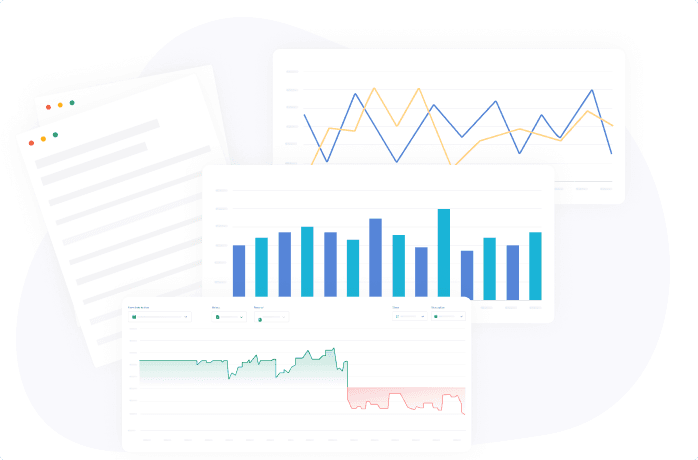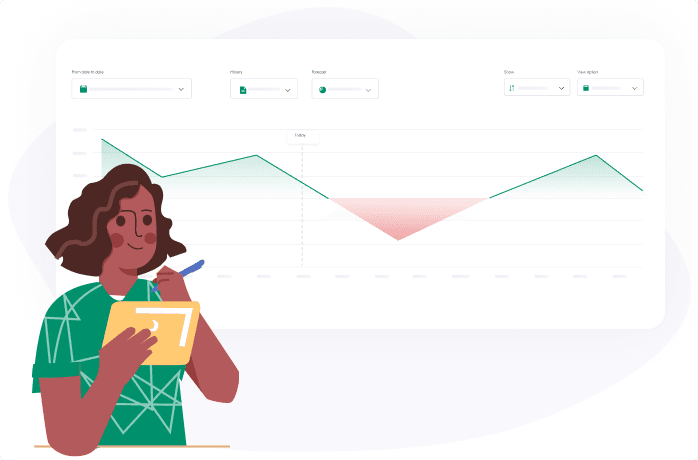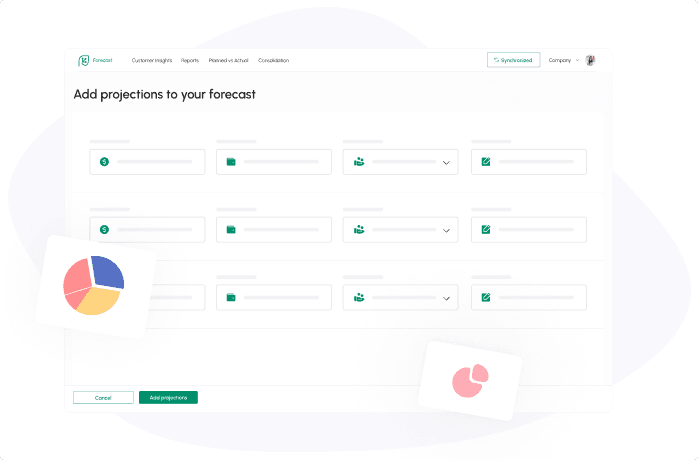

Cash management trends evolve every year. This year is no different. Going into 2024, you must consider the following trends:
Why Is Cash Management Important to Any Business?
What is cash management? It's your business’ process of:
- Collecting cash flow
- Managing cash flow
For a business owner, it’s important to use a cash management service because it empowers your company to understand its financial position and liquidity. When you have full control of your finances, you can make smarter business decisions and reach your goals for growth.
Following this year's trends in cash management will allow you to take better control of your business’ finances.
1. Centralization Of Cash Management
Companies are beginning to centralize all of their cash management needs. Instead of using multiple services, we’re seeing businesses consolidate their accounts into a single platform. When you do this, you keep the following all in one place:
- Accounts
- Payments
One central management solution also allows you to keep costs down while reducing the risk of double transaction errors.
2. Payment Solution for Cash Flow Efficiency
Cash management services are considering the way that consumers pay for goods and services more than ever before. If you want to be at the forefront of cash management, you need to improve cash flow efficiency by accepting:
- Cash
- Credit
- Checks
- Digital currency
- Etc.
Additionally, payment solutions that allow for invoice reminders to be sent automatically and ensure rapid invoice sending will further improve cash flow efficiency.
3. Security Is An Unavoidable Topic
What is the best cash management account? A secure one. Companies of all sizes need to be cautious of the risk of data breaches and cyberattacks. Cash management service providers are under increasing pressure to:
- Implement security best practices
- Offer account securing options, such as two-factor authentication
- Encrypt data to ensure if a breach occurs, it cannot be read
Businesses and service providers need to spend more time considering a service’s security. This is a trend that we expect will continue to rise in popularity as the year goes on.
4. Real-time Payments
The best cash management accounts accept real-time payments. Businesses have long relied on cash payments because they allow them to improve their liquidity the moment that the transaction is made.
We're seeing a rise in real-time payments, and businesses need to follow the trend.
Business owners who want to remain competitive will need to review their payment processes to:
- Allow for real-time payments
- Facilitate transactions faster
- Make it easier for consumers to pay
Additionally, large enterprises are keeping credit and debit cards on file to allow for card verification and faster payments. Remaining competitive this year means allowing frictionless, real-time payments for customers.
If you plan on keeping credit cards on file, it’s even more important to adhere to the tips in point 3.
5. We Are Saying Goodbye To Spreadsheets
Spreadsheets and managing cash flow in Excel are quickly becoming obsolete. Unless you’re in the first few weeks of operation, where you have very few inflows and outflows, you need to start automating your cash management.
Why?
When you use spreadsheets, you’re:
- Spending excess time entering data
- Using more resources than necessary
- Prone to errors in your spreadsheet
Businesses want to use the latest technology to help with their cash management in 2024 and beyond. Saying “goodbye” to spreadsheets is going to become more common this year. SaaS solutions are making it easier to connect with your bank accounts and automate many of the cash management tasks that used to take weeks to manage.
6. Fraud Detection
Fraud remains a concern for businesses of all types and sizes in 2024. One big trend emerging this year is the use of payment hubs. Payment hubs make it easier to manage payments, but they also help improve security.
These hubs also have all of the necessary security and other features to ensure compliance.
But to further improve security, businesses are also investing in:
- Employee training for better detection of fraud before it escalates.
- Fraud detection technologies.
7. Improving Bank Relationships
When it comes to cash management, bank relationships are essential. Many businesses are tasked with managing cash balances across different bank accounts and possibly in different countries.
Many bank platforms are making it easier to manage multiple accounts regardless of their location or currency. Businesses can also make use of banking APIs for better in-house management.
For businesses that would like to diversify and not put all of their cash in a bank, there is an option of opening a cash management account. So, what is a cash management account? A cash management account is a nonbank account that allows you to hold your money, withdraw your cash as needed and earn competitive interest rates.
8. Automated Reconciliation
In 2024, many businesses will say goodbye to manual reconciliation and matching. Doing reconciliation manually is not only time-consuming but can also increase the risk of human error.
Reconciliation solutions allow businesses to import open items from multiple sources automatically. Businesses can also establish a rule-based matching system for AP & AR matching and more.
These solutions connect to the business’s bank account, so transactions are identified and categorized automatically.
Additionally, these solutions may allow for automated postings to a business’s general ledger using pre-defined rules.
Reconciliation automation can save businesses a lot of valuable time that can be spent on more important core tasks.
9. More Control Over Payments
Another trend in cash management for 2024 is having more control over payment. More businesses are focusing on implementing payment hubs or even establishing in-house banks for better management of their payments.
Payment hubs are platforms used to execute payments while providing greater control and visibility over any outgoing payments. They can be useful for manual or automated payments.
Payment hubs also have security measures and audit trails already in place, which helps with compliance.
In-house banks also have a payment hub, but they can carry out payments and collections on behalf of a business’s subsidiaries. As a result, they can make it easier to centralize payment processing and improve efficiency.
Additional features can be added to in-house banks, such as financial risk management, liquidity management and payment reconciliation.
10. Emerging Technologies, Like AI, APIs and RPA
Among the cash management trends of 2024 is the use of emerging technologies like artificial intelligence (AI), application programming interfaces (APIs) and robotic process automation (RPA).
- AI in particular is quickly becoming the standard in cash management and finance management in general. AI can automate mundane tasks like data analysis, allowing team members to focus on more important tasks.
- RPA can automate tasks such as customer onboarding and customer service to free up time for other projects.
- APIs allow services and applications from a variety of providers to work together for an improved user experience and reduced operational costs.
Now more than ever, it’s easy to incorporate these emerging technologies into any business’s cash flow management strategy without a large upfront investment.
Conclusion
These are some of the top cash management trends for 2024. Many businesses will be leveraging technology and automation to save valuable time that can be spent on projects and growth. But businesses will also be focused on security and fraud to protect their own business and their customers’ data.
Related posts:
You may be interested:
New:













